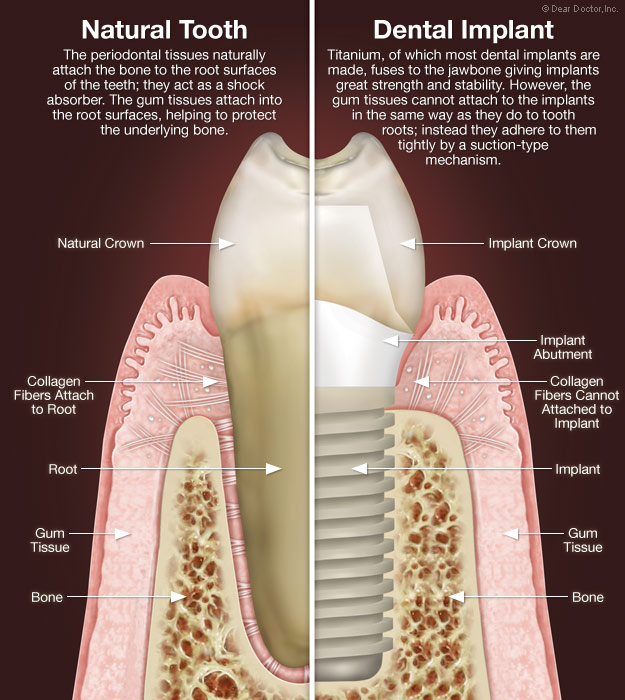Up until recently losing a tooth left you with limited options for replacement. Although permanent teeth are meant to provide a lifetime of function, it does not always end that way. Teeth can be lost from trauma, deep cavities, and gum disease. Even one missing tooth can start a cascade of issues for other teeth and the rest of your body. After a tooth is gone, surrounding teeth will slowly start to shift and migrate to the new space causing increased wear, and possible cracking.
When a tooth is missing, several options might be available for you. Implants and Bridges are among the most popular options for tooth replacement, although all possibilities deserve consideration.
Implants
Implants give you a natural-looking and feeling, long-term solution for tooth replacement. We can replace one or multiple missing teeth with implants in a simple procedure that we can perform here in the office. The process takes longer to finish than a bridge or partial denture, but is well worth the wait.
The first step in the implant process is the surgical placement of the implant. We will see you for post operative appointments once a month to check on the healing progress. Four to six months healing time is needed for the bone to integrate firmly around the implant before the replacement tooth can be placed. After the implant is ready to restore, we will take an impression to send to the lab for the custom abutment and implant retained crown. At the seat date we make sure everything fits perfectly. Adjustments to crowns are not uncommon during the seat appointment. We take an x-ray to verify the crown seats fully.

Bridges
A bridge is one of many options for replacing a missing tooth. First, there must be a tooth on either side of the space to anchor the bridge. These anchor teeth are prepared to accept a covering, like a crown, and have a tooth fused between them that rests gently on your gums, this creates the appearance of a natural tooth. The bridge is then permanently cemented in place.
Two appointments are needed to complete the bridge. At the first appointment the teeth are prepared and a digital impression is sent to the lab to masterfully craft your new bridge. We make a temporary bridge for you while we wait for it to come back from the lab. This usually takes two weeks. At the second appointment we remove the temporary and seat the permanent bridge.
Extra effort is needed to clean under the bridge to prevent decay at the margin of the natural tooth. Different techniques such as a waterpik and floss threaders are great options to help keep your teeth and gums healthy around your new bridge.
Full or Partial Dentures
Removable partial dentures can be a good option for replacing multiple teeth all at the same time with minimal impact on the other teeth in the arch. However, patients are less satisfied with removable appliances due to discomfort, maintenance, and functional concerns. For this reason, this is the last option we recommend. And in certain cases we warn strongly against going this route. Despite their disadvantages, we recognize the partial denture can be a useful solution to patients missing multiple teeth.
Sometimes dental conditions, due to decay or gum disease, can reach the point of being unmanageable. In these cases a full denture can be the most economical and efficient way to restore your function and smile. A full denture consists of gum colored acrylic that rests on your tissue. Acrylic denture teeth are added to the denture to provide function and give the appearance of a natural smile. While dentures have been around for a very long time, modern dentistry has been able to combine the use of implants with dentures to create a more highly functioning prosthesis.


